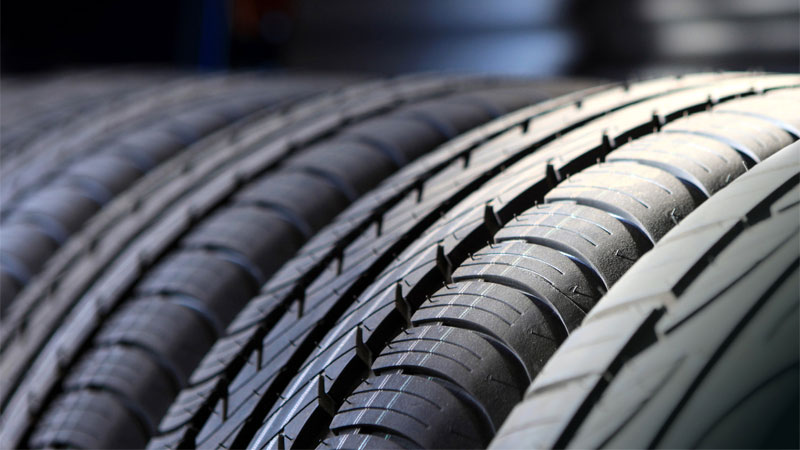Indisputably, you have a lot riding on your tires. Indeed, many of today’s vehicles weigh at least two tons with some larger trucks and SUVs tipping the scales above three tons. With all that weight riding on rubber you might think tire safety would be foremost on every driver’s mind.
Yet, tire management is often neglected as underinflated or worn out tires present a real and present hazard, areas of automotive safety you must not ignore.
Tire Safety 101
Your vehicle’s tires affect not just handling and braking, but also impact fuel economy. Consequently, the tires outfitted on your new car have been carefully chosen by the original equipment manufacturer.
Tire warranties, however, are backed by the tire manufacturer, not the automaker. A copy of your tire warranty is typically bundled with your other important documents and usually reside in your glove box or other storage compartment.
Adequate Tire Inflation
If you want to ensure long tire life, adequate handling and safe braking, your tires should stay inflated in accordance with the car manufacturer’s guidelines. In particular, that information is usually found on a placard affixed to the inside jamb of the driver’s door. In some vehicles the placard or sticker is located on the inside cover of the glove box.
Auto Trends reached out to Will Robbins, Product Manager for Bridgestone Americas Tire Operations, for seasonal tips about tire care, especially the impact extreme temperatures can have.
Explained Robbins, “Proper tire pressure is critical to tire safety. Drivers should check their tire inflation pressure at least once each month, and that becomes even more critical during the cold, winter season. In general, tires lose one PSI (pound per square inch) of pressure for every 10-degree Fahrenheit drop in ambient temperature. The opposite is true for warm weather conditions, with tire inflation pressure increasing one psi for every 10-degree Fahrenheit increase in ambient temperature.”
Your vehicle’s Tire Pressure Monitoring System monitors tire pressure and will let you know when the pressure drops past a certain threshold.
Thus, a sudden drop in temperature overnight can leave your tires underinflated. As a result, control can become compromised, especially when you need it most as in when driving on snow and ice.
Load Limits and Speed Ratings
Two additional factors also affect tire safety: load limits and speed. Likewise, every tire has its limitations. Specifically, the amount of weight you carry in the car (payload) in addition to the vehicle’s weight itself (gross vehicle weight) will influence tire safety for better or for worse.
There are three ways you can determine load limits.
- First, return to the placard that lists PSI information. You may see a statement such as, “The combined weight of occupants and cargo should never exceed 400kg or 882 pounds.”
- Second, look on the tire sidewall itself, information found nearest the wheel. This isn’t easy to spot as the notation surrounding the wheel is stamped in small letters. Typically, you’ll find a statement such as “maximum load carrying capacity at maximum cold inflation pressure (single and dual load).”
- Third, open your owner’s manual. If all else fails, turn to the section of the owner’s manual describing tire information.
You may not own the tools required to gauge your vehicle’s weight and carrying capacity (such as a scale), but through keen observation, you should see if your car is sinking under a heavy load. If it is, you must remove excess weight.
Tires are also safety rated for speed. Most drivers adhere to road speed limits, but if you like to take your car to the track, you should understand that the letter ratings on the sidewall represent its speed ratings. Those ratings range from “L” for 75 mph to “(Y)” for speeds above 186 mph.
Tire Rotation and Balancing
Tire rotation and balancing is important for two related reasons:
- For the even distribution of tread wear, and
- For safe handling.
Your owner’s manual will spell out rotation timelines and swap patterns, typically ranging from 6,000 to 8,000 miles.
The swap pattern for rotating tires depends on whether you have directional or symmetric (or asymmetric) tires and the type of vehicle you drive.
Do not cross your set of directional tires to the other side of the car without having them dismounted from the rim, turned over and remounted. With this in mind, performance models — especially sports cars — are much more likely to feature directional tires.
Different tire rotation patterns exist for front-, rear- and all-wheel-drive vehicles. Your owner’s manual will list those options.
When to Replace Your Tires
Exactly when should you replace your tires? The industry rule of thumb is when the tread wears down to 1/16 inch. Otherwise, you can rely on wear indicators or bars located between the tread pattern in modern tires to assist you in making a determination. Specifically, these indicators appear when tires have 2/32 (1/16) inch tread remaining.
Relying on tread depth alone to determine tire replacement is not enough. A tire’s age is another factor as tires gradually begin to crack and separate over time. Some car manufacturers recommend replacing tires every six years, regardless of wear, while other tire manufacturers say that tires can last as long as 10 years, according to Edmunds.com.
Tire Safety: To Ensure a Safe Ride
Tire safety is only one ingredient in ensuring a safe drive. So, when you rotate your tires, have your brakes checked too. Furthermore, you should have your tires balanced every other time you rotate your tires or whenever you detect a recurring vibration coursing through the steering wheel while driving.
See Also – Higher Education: Winter Driving School
- 2024 Mazda CX-50: A Compact SUV with Premium Aspirations - Apr 15, 2024
- 2024 Ford Mustang (Iconic Pony Car Evolves) - Apr 4, 2024
- 2024 Ford Maverick (Looks Like a Truck, Drives Like a Car) - Mar 28, 2024





